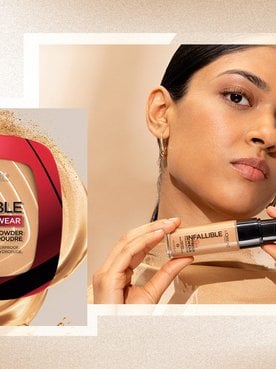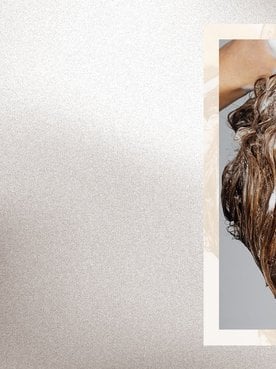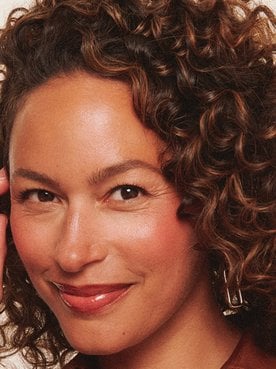Perfecting your makeup isn’t just about picking shades you love, it’s also about finding colors that enhance your natural features. Understanding your skin undertones is a game-changer when it comes to choosing makeup that makes your complexion pop. Whether you lean warm, cool, or sit right in the middle with a neutral undertone, knowing this small detail can elevate your entire look. Keep reading to learn how to figure out your skin undertones and enhance your face with the right colors.
What’s an Undertone?
Your skin’s undertone is the subtle hue beneath the surface that influences how your skin looks overall. Unlike your skin tone, which might change with the seasons, your undertones stay consistent. They come through whether you’re fair, deep, or anywhere in between. Your skin undertone influences how your skin looks in different lights and what colors complement you best. Unlike your skin tone, your undertones never change.
Why It Matters to Know Your Undertone
Knowing your skin undertones can save you from makeup mismatches. If you don’t match your undertones, the foundation may look too ashy, orange, or muddy against your skin undertone, and blush or lipstick can clash, making your complexion appear dull, washed out, or overly red. When your undertone is correctly matched, foundation blends seamlessly, and your whole makeup comes together to enhance your natural features. Discovering your skin undertone will even help you choose clothing and hair colors that complement you.
Types of Undertones Explained
Undertones set the stage for how colors interact with your skin. They’re like a built-in color guide that can make or break your look, helping you pick colors that truly flatter. Here's how warm, cool, and neutral undertones show up on your skin.
Warm undertone
Skin with a warm undertone usually shows hints of yellow, gold, or peach. You might notice you tan easily and look especially good in earth tones, warm reds, and corals. Wearing shades like cool pinks or blue-based reds can make your skin look washed out. So, always stick to colors that match your warm undertone to ensure your complexion always looks bright and healthy.
Cool undertone
A cool undertone means your skin has subtle pink, red, or bluish notes. Jewel tones like sapphire, emerald, and icy pinks tend to make cool undertone skin pop. Wearing warm shades that clash can make your skin look ruddy or emphasize redness. Choose colors that align with your cool undertone to keep your complexion fresh and balanced.
Neutral undertone
If you have a neutral undertone, your skin balances both warm and cool. It means most shades work for you, making it easier to experiment with a wider palette without the risk of colors clashing or looking unnatural. Just be mindful to adjust slightly, too warm or too cool can still sometimes throw off your look. Choosing shades that sit in the middle keeps your neutral undertone harmonious.
How To Know Your Undertone: 3 Easy Tests
There are a few simple tricks that can help you figure out your undertone right at home. Try these quick tests for clues to whether you have a warm, cool, or neutral undertone.
1. The vein test
Look at the veins on your inner wrist. Blue or purple veins suggest a cool undertone, while greenish veins mean you likely have a warm undertone. If you see both, chances are your undertone is neutral. If it’s still hard to decide, try looking in different lighting or comparing wrists side by side with a friend to see subtle differences.
2. The jewelry test
Try on silver and gold jewelry. Silver tends to enhance cool undertone skin, making it appear clearer and more luminous. Gold tends to bring out the warmth in warm undertones, giving the skin a healthy glow. If both metals look equally flattering without overpowering your complexion, it points to a neutral skin tone that can wear just about anything.
3. The white fabric test
Hold a pure white shirt or towel under your chin. Skin that looks rosy or pinkish indicates cool undertones, while a golden or yellow cast points to warm undertones. If your complexion stays balanced without strongly leaning either way, that suggests a neutral undertone. This simple check under natural light can help you see subtle differences clearly and understand your skin undertones better.
Best Makeup for Every Undertone
Picking makeup that highlights your natural features based on your skin undertones makes all the difference. When you use the right shades, your foundation, blush, eyeshadow, and lipstick will naturally enhance your complexion, working together instead of competing. Here’s how to choose the best products and shades.
Foundation and concealer
Choosing the right foundation and concealer starts by testing shades on your jawline or just below it to see how well they blend. Natural daylight is best for checking color (store lighting often distorts undertones). Aim for a shade that disappears into your skin without leaving obvious lines or making you look too yellow, pink, or gray.
Here are two standout foundation options worth trying, each offering shades and textures that work beautifully with different skin undertones:
L'Oréal Paris Lumi Le Glow Skin Tint
This skin tint comes in 16 buildable shades. Its light, glowy texture gives skin a radiant finish without feeling heavy. It’s perfect for adding a subtle, luminous look that enhances your undertone naturally.

L'Oréal Paris Infallible 32HR Fresh Wear Foundation
Available in 40 shades, this breathable, long-wear foundation adapts to warm, cool, and neutral undertone skin. It offers full coverage with a fresh, lightweight feel that stays true in natural light, making it easy to match your exact undertone.

Blush
Warm undertones shine in peach, coral, and golden rose shades, bringing out the skin’s natural glow. Cool undertones look more lively with berry, mauve, and soft pinks, which brighten and balance pink or blue undertones without exaggerating them. If you have a neutral undertone, you can wear almost any blush.
Whether you're warm, cool, or neutral, the L'Oréal Paris Lumi Le Liquid Blush is one to try. It offers a radiant pop of color with intense, buildable pigments in six shades, from soft pinks to vibrant corals.

Eyeshadow
Bronze, copper, and warm gold bring out the best in warm undertones, while silvers, charcoals, and jewel tones make cool undertones come alive. Those with a neutral undertone can mix both for a custom look. If you’re looking for a wide color variety to suit any undertone, the L'Oréal Paris Paradise Le Shadow Stick is a standout pick. It comes in fourteen rich, creamy shades like Twinkly Rose, Magnetic Mauve, and Midnight Noir. This stick glides on effortlessly, blends smoothly, and stays put without smudging, making it a versatile choice to highlight every undertone beautifully.

Lipstick
Choose terracotta, brick, or warm reds for warm undertones. If you have a cool undertone, you'll look great with blue-based reds and deep berries. With a neutral undertone, you can explore both ends of the spectrum. Explore 52 rich, creamy shades with the L'Oréal Paris Colour Riche Satin Lipstick, which delivers intense color payoff and a smooth, hydrating feel that suits every undertone beautifully.
Hair Colors That Match Your Undertone
Cool undertones
Ash blonde, cool browns, jet black, and blue-black shades pair beautifully with cool undertone skin. These shades help bring out a soft flush while keeping redness from appearing too strong, creating a balanced, elegant look. Choosing hair colors that lean cool ensures your complexion stays fresh and vibrant.
Shop the Products
Warm undertones
Golden blonde, honey brown, and copper shades add vibrancy to warm undertones. They amplify the skin’s natural warmth, giving it a healthy, sun-kissed glow that looks radiant in any light. Rich, golden hues prevent your complexion from looking dull or washed out.
Neutral undertones
Most shades work well for a neutral undertone, from cool ash tones to warm caramels. Slight adjustments keep your look balanced, avoiding anything that might lean too warm or too cool. This flexibility makes it easy to experiment with trends while still flattering your neutral skin tone.
Next Up: How To Find Your Foundation Shade Match: An Expert Guide
Photo courtesy of L’Oréal Paris
Photo credit: IG/@neseaguiar, @eringallienne, @sasha_jamm, @looksblush24







